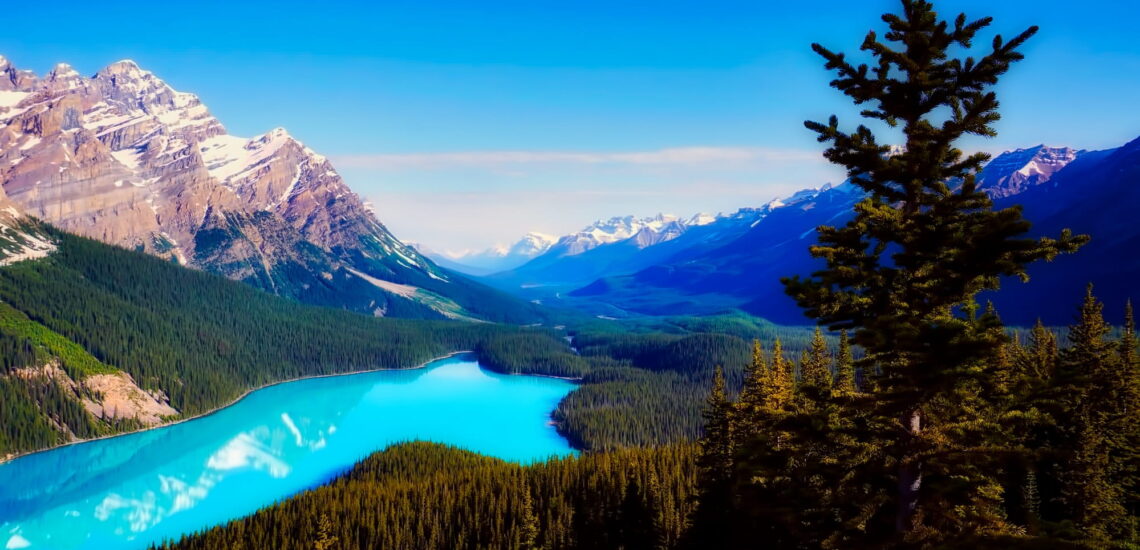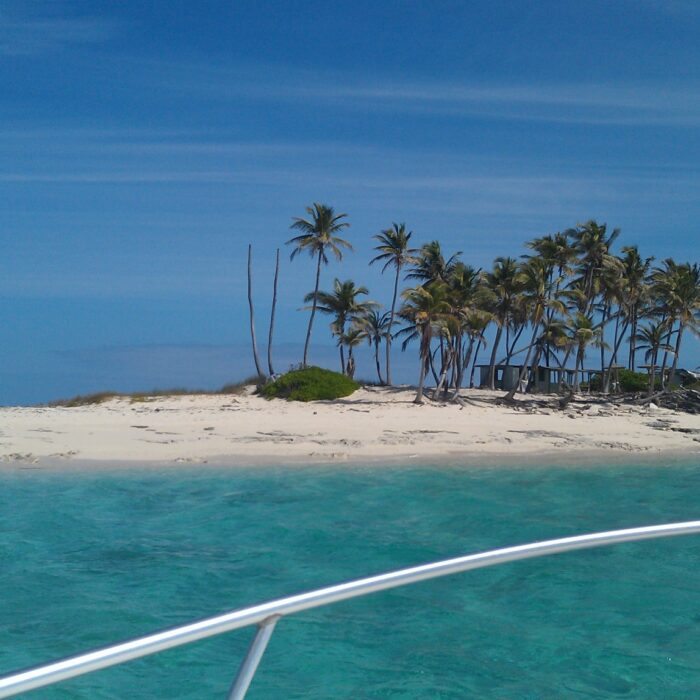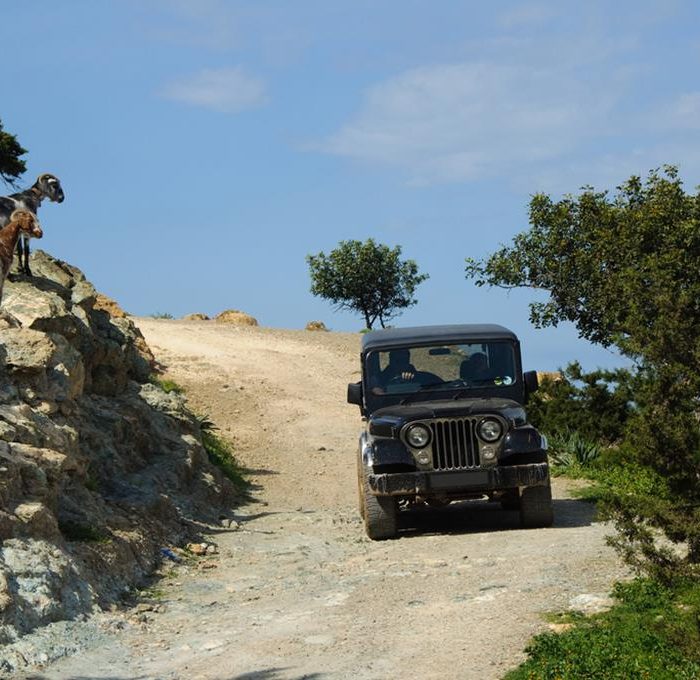Datos breves sobre Canadá:
- Población: Aproximadamente 39 millones de personas.
- Capital: Ottawa.
- Idiomas oficiales: Inglés y francés.
- Divisa: Dólar canadiense (CAD).
- Gobierno: Democracia parlamentaria federal y monarquía constitucional.
- Religión mayoritaria:Cristianismo, con un abanico diverso de confesiones que incluye catolicismo, protestantismo y otras creencias, junto a una creciente diversidad religiosa.
- Geografía:Situada en Norteamérica, limita al sur y noroeste con Estados Unidos, al este con el océano Atlántico, al oeste con el océano Pacífico y al norte con el océano Ártico.
Dato 1: La mayor parte de la población de Canadá vive en su frontera sur
En la frontera sur de Canadá, que comparte con Estados Unidos, se encuentran las provincias más pobladas del país: Ontario, Quebec y Columbia Británica. Estas provincias albergan grandes ciudades como Toronto, Montreal y Vancouver, que cuentan con grandes poblaciones urbanas y sirven de centros económicos y culturales.
Varios factores contribuyen a la concentración de población en el sur de Canadá. Históricamente, los patrones de asentamiento estaban influidos por la accesibilidad a las rutas de transporte, los recursos naturales y las tierras agrícolas. Las regiones meridionales de Canadá se benefician de climas más suaves, suelos fértiles y proximidad a las redes de transporte, lo que las hace más atractivas para el asentamiento y el desarrollo económico.
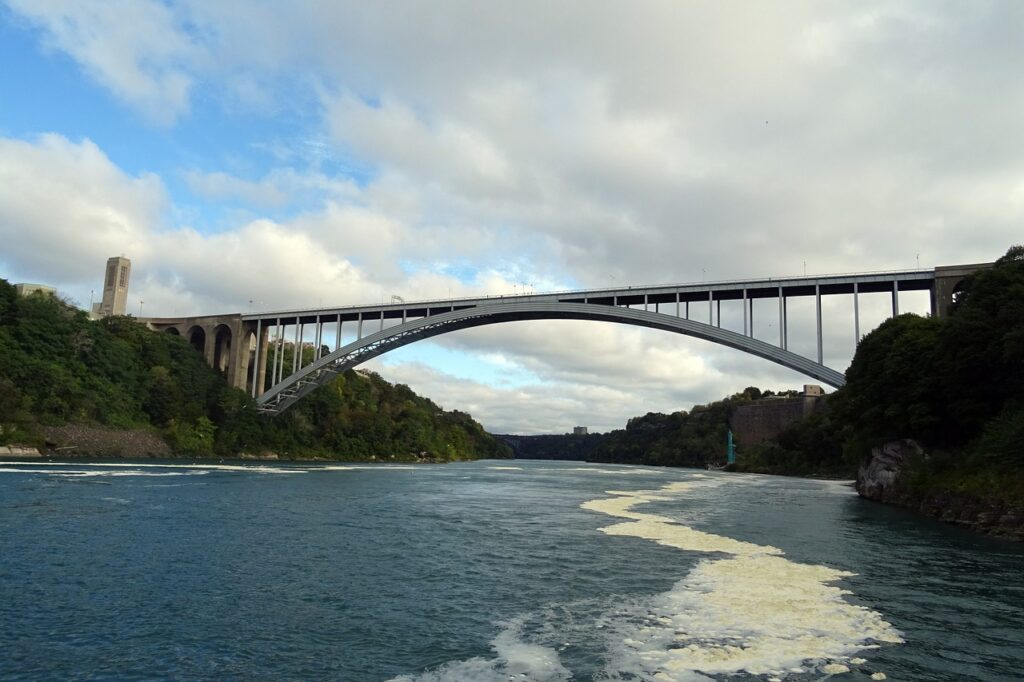
Dato 2: Canadá es el mayor productor de sirope de arce
La producción de sirope de arce es una industria importante en Canadá, sobre todo en la provincia de Quebec, que representa la mayor parte de la producción de sirope de arce del país. Otras provincias canadienses, como Ontario, Nuevo Brunswick y Nueva Escocia, también producen sirope de arce, aunque en menor cantidad.
El proceso de producción del sirope de arce consiste en explotar los árboles de arce azucarero durante el deshielo primaveral, recoger la savia y luego hervirla para concentrar los azúcares y crear sirope de arce. Este proceso requiere unas condiciones climáticas específicas, con temperaturas de congelación por la noche y más cálidas durante el día, que son típicas en muchas regiones de Canadá durante la primavera.
Dato 3: El hockey es considerado el deporte de invierno nacional de Canadá.
De costa a costa, los canadienses adoptan el hockey como algo más que un juego: es una pasión compartida que une a las comunidades y fomenta un sentimiento de orgullo nacional. Este deporte se celebra de varias maneras: a través de ligas juveniles, ligas recreativas para adultos, competiciones universitarias y hockey profesional al más alto nivel.
Además de jugar, los canadienses siguen con avidez ligas profesionales de hockey como la Liga Nacional de Hockey (NHL), donde muchos equipos canadienses compiten junto a franquicias estadounidenses. Las eliminatorias anuales de la Copa Stanley, la cumbre del hockey profesional, cautivan a millones de aficionados canadienses que animan a sus equipos y jugadores favoritos.

Dato 4: Canadá tiene la mayor población de alces del mundo
Los vastos espacios naturales de Canadá ofrecen un amplio hábitat y recursos para los alces, lo que les permite prosperar en diferentes ecosistemas. Sin embargo, estimar el tamaño exacto de la población de alces de Canadá es un reto debido a factores como la fragmentación del hábitat, los patrones de migración y las variaciones en los métodos de estudio.
Están bien adaptados a diversos hábitats y se encuentran en casi todas las provincias y territorios canadienses, con poblaciones especialmente densas en regiones como Terranova y Labrador, Ontario, Quebec, Columbia Británica y Alberta.
Dato 5: Canadá tiene más de 200.000 kilómetros de costa
Canadá posee uno de los litorales más extensos del mundo, gracias a su vasta red de costas a lo largo de los océanos Atlántico, Pacífico y Ártico. Sin embargo, se calcula que la longitud total del litoral canadiense es de aproximadamente 202.080 kilómetros (125.570 millas), incluyendo todas las costas continentales e insulares. Esta medida tiene en cuenta los intrincados detalles del litoral, como bahías, ensenadas y fiordos, que contribuyen significativamente a su longitud total.
El litoral canadiense abarca una gran variedad de paisajes, desde escarpados acantilados y playas arenosas hasta costas rocosas y remotas islas costeras. Alberga una rica biodiversidad, incluidos diversos hábitats marinos, ecosistemas costeros y especies de fauna y flora silvestres.
Nota: Antes de viajar a Canadá, infórmese aquí de si necesita un permiso de conducir internacional para alquilar y conducir un coche.

Dato 6: A los canadienses les encantan los macarrones con queso
Los macarrones con queso son un plato reconfortante clásico que consiste en pasta de macarrones cocida combinada con una salsa de queso, normalmente de cheddar u otros tipos de queso. Es un plato versátil que puede servirse como plato principal o como guarnición, y a menudo se personaliza con ingredientes adicionales como beicon, verduras o pan rallado.
En Canadá, los macarrones con queso ocupan un lugar especial en la cultura culinaria y los disfrutan personas de todas las edades. Es habitual encontrarlo en los menús de los restaurantes, en platos precocinados y como plato casero preparado para reuniones familiares, comidas en grupo y ocasiones especiales.
Dato 7: Canadá es famoso por sus lagos
Canadá alberga un gran número de lagos, desde pequeños estanques hasta grandes masas de agua. El país cuenta con más lagos que cualquier otra nación del mundo, con estimaciones que oscilan entre los 2 y los 3 millones de lagos, dependiendo de los criterios utilizados para su clasificación.
Algunos de los lagos más famosos de Canadá son:
- El Gran Lago del Oso: Situado en los Territorios del Noroeste, el Gran Lago del Oso es el mayor lago de Canadá y el octavo del mundo en superficie.
- Gran Lago de los Esclavos: También situado en los Territorios del Noroeste, el Gran Lago de los Esclavos es el segundo más grande de Canadá y el más profundo de Norteamérica.
- Lago Superior: Compartido con Estados Unidos, el Lago Superior es el mayor de los Grandes Lagos por superficie y el mayor lago de agua dulce por superficie del mundo.
- El lago Ontario: El lago Ontario, otro de los Grandes Lagos, forma parte de la frontera entre Canadá y Estados Unidos y es famoso por sus pintorescas orillas y sus posibilidades recreativas.
- Lake Louise: Enclavado en el Parque Nacional de Banff, en Alberta, Lake Louise es famoso por sus impresionantes aguas turquesas y su pintoresco paisaje montañoso, que atrae a visitantes de todo el mundo.
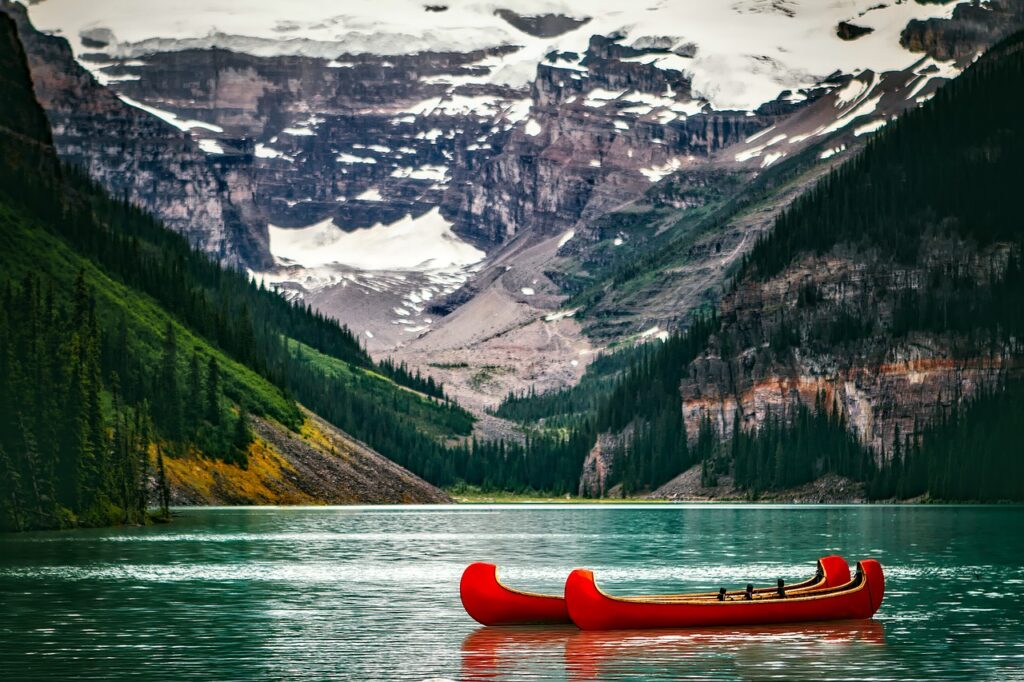
Dato 8: La pizza hawaiana procede en realidad de Canadá
La pizza hawaiana es una popular variedad de pizza originaria de Canadá a principios de los años sesenta. Se atribuye a Sam Panopoulos, un inmigrante griego que tenía un restaurante en Chatham, Ontario, llamado Satellite Restaurant.
Panopoulos y sus hermanos experimentaron con varios ingredientes de pizza para crear nuevas combinaciones de sabores, y decidieron añadir piña y jamón enlatados a una base de pizza tradicional. Bautizaron la creación como “pizza hawaiana”, probablemente inspirándose en la marca de piña en conserva utilizada.
La combinación de dulce piña y sabroso jamón pronto se hizo popular entre los clientes, y la pizza hawaiana se convirtió en un plato básico del menú del restaurante Satellite. Con el tiempo, se extendió a otras pizzerías de Canadá y acabó popularizándose internacionalmente.
Dato 9: Una décima parte de los bosques del planeta está en Canadá
Canadá es famoso por sus vastas extensiones de tierras forestales, que cubren aproximadamente 347 millones de hectáreas (unos 857 millones de acres) o aproximadamente el 9% de la superficie forestal total del mundo. Esto convierte a Canadá en uno de los principales países en cuanto a superficie forestal, sólo superado por Rusia en superficie forestal total.
Los bosques del país son increíblemente diversos y abarcan bosques boreales, bosques pluviales templados, bosques mixtos y otros ecosistemas. Proporcionan hábitat a una gran variedad de especies vegetales y animales, sustentan las culturas indígenas y sus medios de vida, contribuyen al almacenamiento de carbono y a la regulación del clima, y ofrecen oportunidades para el ocio, el turismo y la extracción de recursos.

Dato 10: El nombre del país procede de una palabra nativa
Se cree que el nombre “Canadá” procede de la palabra iroquesa “kanata”, que significa “aldea” o “asentamiento”. El explorador francés Jacques Cartier conoció el término a principios del siglo XVI, cuando lo utilizó para referirse a la región cercana a la actual ciudad de Quebec. Es posible que los indígenas que encontró se refirieran a su aldea o asentamiento al utilizar la palabra “kanata”.
Con el tiempo, el nombre de “Canadá” se asoció a todo el territorio explorado por Cartier y posteriores exploradores franceses y británicos, abarcando gran parte del actual este de Canadá. Cuando se formó la Norteamérica británica en el siglo XVIII, se mantuvo el nombre de “Canadá”, que acabó convirtiéndose en el nombre oficial del país tras su confederación en 1867.

Publicado Abril 27, 2024 • 7m para leer

